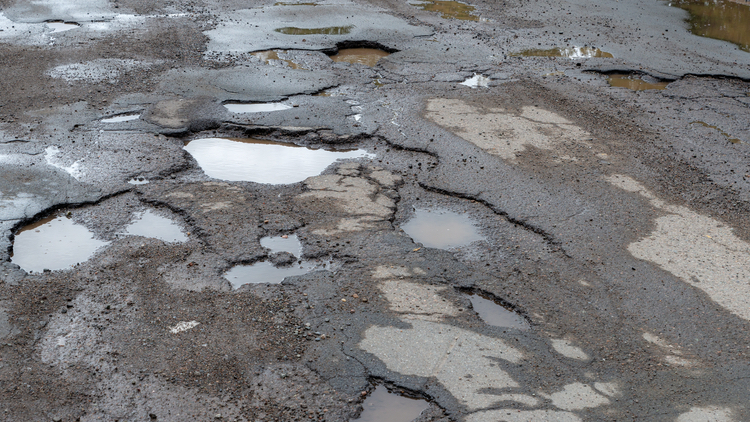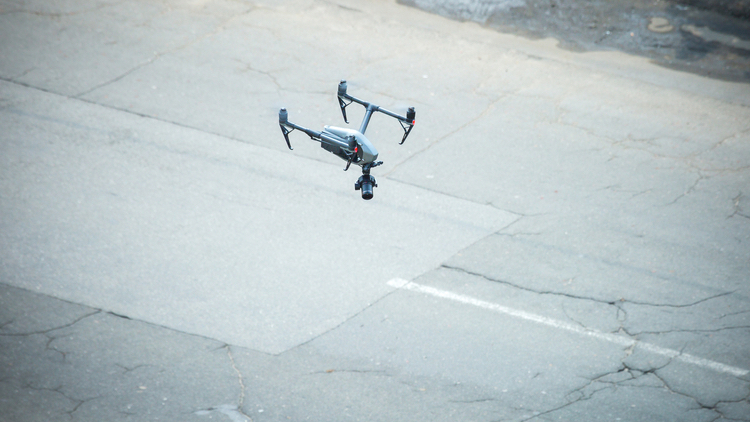
Local councils could use smart video, drones and digital twins to combat potholes in a sustainable way following the successful trial of a digital gateway designed by Atkins.
The gateway, known as the Digital Intelligent Brokerage (DIB) Hub, was tested by Wiltshire Council and sponsored by the Department for Transport. It is designed to broaden engagement with SMEs, academia and other innovative organisations that may not usually have direct contact with highway clients. The DIB Hub also has a particular focus on cross-sector learning and technologies.
Among a total of six opportunities to address Wiltshire’s potholes identified by the DIB Hub were those focused on smart video, drones and a digital twin.
The Atkins project team has met with representatives from Wiltshire Council to validate and challenge the proposals, and create plans for the development and implementation of innovation pilots.
The recently published DfT/Atkins report reveals more about these opportunities and how they may be implemented, but does not name the providers of the solutions.
Smart video
An SME response to the DIB Hub identified an app to ensure quality of delivery of work through visual workflows that can incorporate AI-powered suggestions, promoting consistency and driving accountability.
In a highway environment, the app could be used for undertaking safety inspections, identifying potholes (or other asset defects), and also monitoring and supporting the delivery of maintenance activities.
As well as adoption within the highway inspection/ maintenance workforce, the app may support collaboration and alignment with other stakeholders such as utilities, if adopted by them too.
Benefits identified include more streamlined planning and delivery of works, avoidance of repeat defect problems and a reduction in claims against the highway department. Ultimately, the app is designed to be connected and integrated into decision-making systems and processes, using open APIs, rather than simply acting as a point solution.
The SME has experience working with international partners including a number of blue-chip clients, and has applied the technology with sectors including utilities and manufacturing in the last six years.
The report notes that trials within a local authority would be expected to take place with operative staff, either within the authority workforce or within a contractor’s organisation. For the latter, there may be possible issues to address around contractual changes required to implement the technology, which may have a cost impact.
For either scenario, there would be expected license costs and risks around change management, with the biggest challenge “not perhaps around the technical capability of the app but in the human response from staff who may be resistant to changing from tried and trusted ways of working”.
As well as adoption within the highway inspection/maintenance workforce, the app may support collaboration and alignment with other stakeholders such as utilities, if adopted by them too.
The SME technology may be trialled as a standalone piece of work, or alternatively linked into a digital twin to provide a two-way flow of data.

Automated drones
The DIB Hub identified an approach of using autonomous drones to carry out highway inspections, which was submitted by an international ‘mini-consortium’ of SMEs.
The proposal is intended to function in both urban and rural locations, to assess road conditions for defects such as potholes. Key features include the autonomous mission management software used to control the drones without the need for a competent pilot (addressing challenges around safety and skills constraints), and the use of predictive analytics and statistical analysis capabilities. This provides a joined-up process of data collection and processing.
The SME group has experience in this field delivering related work for the Ministry of Defence and carrying out urban inspections of roads outside of the UK. As the technology becomes more proven in this country, there is potential to extend this beyond potholes/carriageways to all asset types of highway infrastructure, the report notes.
It is likely that an initial pilot within a local authority would involve comparing the system’s performance and reliability in assessing pothole defects with traditional machine- or human-based techniques.
The automated drone technology may be trialled as a standalone piece of work, or alternatively linked into a digital twin to provide a two-way flow of data.
Considerations would need to be given to the risks of using automated equipment on or above a live highway network, so off-network trials may need to be considered.
The automated drone technology may be trialled as a standalone piece of work, or alternatively linked into a digital twin to provide a two-way flow of data.
Also, the drone offering includes an element of analysis, but there may be value in combining with another DIB hub respondent that can take the processed data and feed this into their advanced decision support tool that not only supports lifecycle planning from a financial and asset performance perspective, but also provides an understanding of social performance impacts.
This includes availability and disturbance (travel time and vehicle operating costs), road safety (fatal and severe accidents related to asset condition), environment (noise, air pollution and natural resources), and socio-economic (asset value and wider social effects).
Digital twin
An SME respondent outlined their capabilities in collecting, managing and visualising data related to infrastructure, including traditional image capture techniques and more innovative approaches such as drones and the use of satellite data.
Systems are available to incorporate data from multiple sources, followed by the analysis and compilation of data, including the combination of spatial and non-spatial data. Data can be further processed through the use of both deep and evolutionary learning, and the resulting digital twin can be used to model simulations and scenarios.
Implementation of this SME’s offering as a pilot within the authority would require ownership from the client’s digital and asset management teams as a minimum. Other stakeholders may need to be included as and when appropriate, especially as there are opportunities to combine other providers with this proposal.
First, there is scope to link the system into existing data owned by Wiltshire, either within the existing asset management system and/or visual asset data collected by the authority’s providers.
Second, there are options to introduce other SMEs from the DIB hub process: those focused on security and systems integration support, for example.
Comments
Comments are closed.












To really access the condition of all roads except motorways the inspectors need to get out on bicycles so that they can not only see the road condition but also feel it. Drones would not give the full picture of worn surface dressed roads the full depth of pot holes or the full effect of failed sub base.